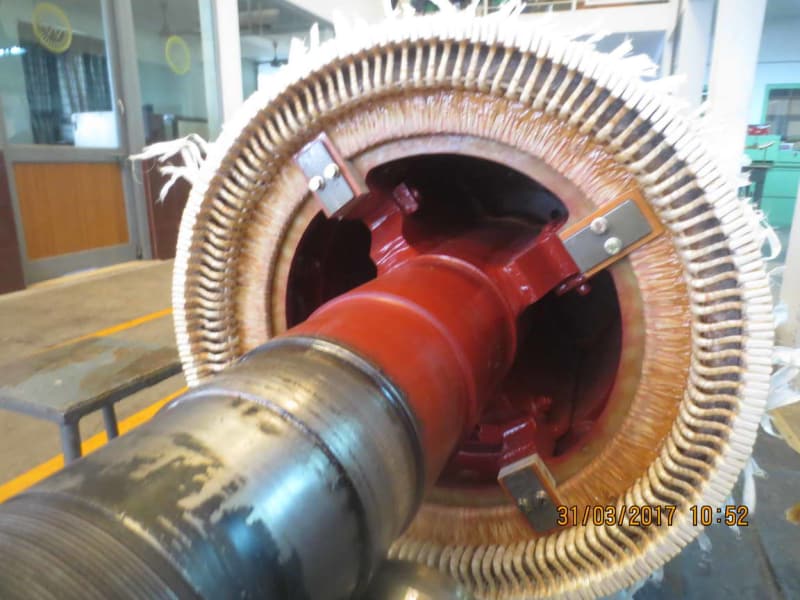Dear All
Recently , during periodic maintenance we observe two burnt spots on edge of the commutator bars (near the risers). so we worried and perform the electrical
tests and find out the results as below : (Motor spec: DC Motor 930 kw - 1500 RPM - 800V - 1227A)
1 - Insulation Test : V(test)=1000v - result : IR(15 sec ) = 4.74 G ohm and IR(1 min )= 12.7 G ohm
2 - Measurement of Resistance = 1.1 m Ohm
3 - Measurement of Inductance = 6.6 micro H
4 - Surge Test : V(test) = 2000 - result = OK
some people declared that "Equalizer winding of the rotor " is damaged and rotor must be rewind completely and the others proposed that repairing of the damaged spots is possible and it is not necessary to rewind complete rotor . it is notable that the commutator is not V ring type and spare rotor/motor is not available .photos is attached
What's your Proposal ?
thank you for your kind ideas .
Recently , during periodic maintenance we observe two burnt spots on edge of the commutator bars (near the risers). so we worried and perform the electrical
tests and find out the results as below : (Motor spec: DC Motor 930 kw - 1500 RPM - 800V - 1227A)
1 - Insulation Test : V(test)=1000v - result : IR(15 sec ) = 4.74 G ohm and IR(1 min )= 12.7 G ohm
2 - Measurement of Resistance = 1.1 m Ohm
3 - Measurement of Inductance = 6.6 micro H
4 - Surge Test : V(test) = 2000 - result = OK
some people declared that "Equalizer winding of the rotor " is damaged and rotor must be rewind completely and the others proposed that repairing of the damaged spots is possible and it is not necessary to rewind complete rotor . it is notable that the commutator is not V ring type and spare rotor/motor is not available .photos is attached
What's your Proposal ?
thank you for your kind ideas .

